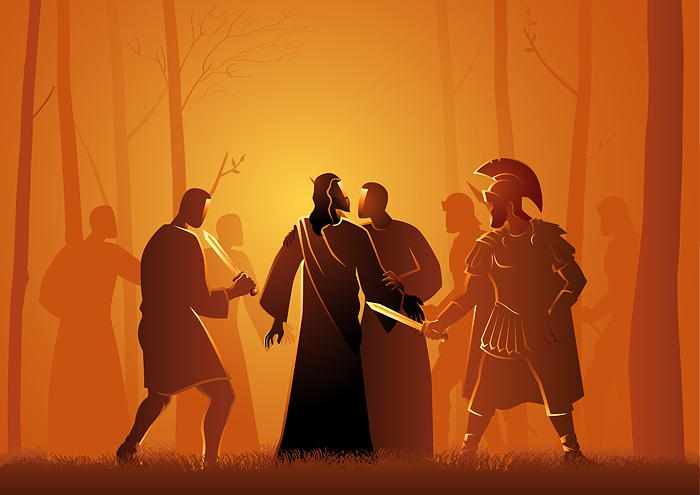
This is the seventy-sixth lesson in author and pastor Mel Lawrenz’ How to Live the Bible series. If you know someone or a group who would like to follow along on this journey through Scripture, they can get more info and sign up to receive these essays via email here.
See Mel Lawrenz’s book, How to Study the Bible: A Practical Guide.
Many people would say they have a hard time entrusting themselves to the view of the world the Bible portrays because the biblical authors are just expressing their own biased opinions. But the core of biblical faith is all about the life, teachings, death, and resurrection of Jesus. Either these things happened or they did not. Luke, at the start of his Gospel wants to make it clear that his telling of the Jesus story is based on eyewitness accounts. In other words, seeing is believing.

Luke says: “Many have undertaken to draw up an account of the things that have been fulfilled among us, just as they were handed down to us by those who from the first were eyewitnesses and servants of the word” (Luke 1:1). This tells us several things. First, there were many people talking about the amazing life and times of Jesus in the days that followed his death and resurrection. It should not surprise us that it was believers in Jesus who left accounts of his life, and not investigative journalists and objective historians. There were no journalists at the time, and historians wrote about what interested them–usually the splashy, bloody, political events, not things like the small mustard seed of Jesus’ ministry which they would have considered peasant rumor.
There were close-in observers who passed along bits and pieces of the story, and most of it in oral form since that was considered the normal and reliable way of passing on a story. But Luke distinguishes himself. He says he has written the things that were “handed down” to him by the “eyewitnesses” of the events. “Handing down” is a technical term for the careful transmission of a defining story. In other words, the story of Jesus, as reported by Luke and the other Gospel writers is not a collection of rumors and hearsay. The details were “handed down,” and so they appear in the four Gospels—Matthew, Mark, Luke, and John—many of the details overlapping, but each Gospel writer choosing the parts of the story he wanted to tell. Luke had access to “eyewitnesses,” the immediate followers of Jesus, who could say exactly what happened and when and why.
Modern critics of the Bible reason that we cannot take the Gospel accounts seriously because they were written by people who were believers in Jesus and his divine authority and power. They were proponents of a position.
This is true. Luke calls them “eyewitnesses” and “servants of the word.” But it is pure circular reasoning to say that because the eyewitnesses became believers, that therefore their accounts cannot be taken seriously. If I was out golfing all by myself late in the day and got a hole-in-one, and told some random people at the clubhouse, they may have a hard time believing my account because my testimony would appear to be self-aggrandizing. And if I said I got two holes-in-one, they would really be skeptical, not because it is impossible to happen but because it is highly unlikely that it would happen.
That is why Luke talks about “eyewitnesses.” The Jesus story is not like someone claiming he got a couple of holes-in-one on one round of golf. There were many people who saw what Jesus did and heard what Jesus said.
The Gospel writers say this about the extraordinary life of Jesus: a man showed up who could work miracles, and whose teaching arrested our attention, and who called himself Son of God and Son of Man. We know this is unlikely. But it is what happened nonetheless. And it makes sense because it includes everything we’ve always wanted to believe.
___________
[If you believe this series will be helpful, this is the perfect time to forward this to a friend, a group, or a congregation, and tell them they too may sign up for the weekly emails here]
Mel Lawrenz (@MelLawrenz) trains an international network of Christian leaders, ministry pioneers, and thought-leaders. He served as senior pastor of Elmbrook Church in Brookfield, Wisconsin, for ten years and now serves as Elmbrook’s minister at large. He has a PhD in the history of Christian thought and is on the adjunct faculty of Trinity International University. Mel is the author of 18 books, including How to Understand the Bible—A Simple Guide and Spiritual Influence: the Hidden Power Behind Leadership (Zondervan, 2012). See more of Mel’s writing at WordWay.
The post How to Live the Bible — Seeing Is Believing appeared first on Bible Gateway Blog.










